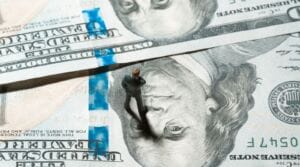You have instructed your tax professional to reduce the value of your business. This statement isn’t 100 percent accurate, but it’s not a false statement either. You are not literally paying your tax professional to make your business look like it is worth less. Nor is your tax professional working against you to cost you money. In the end, however, that is exactly what happens to many small businesses. You ask your tax professional how to pay less taxes. Your tax professional, in turn, finds legitimate expenses that can be written off in the business; thereby, reducing your tax bill. The problem is, a business with no profit has no value, generally speaking. There are exceptions, however, and this article aims to teach you how to keep your taxes low while preserving value.
To understand this, let’s talk a little about value. EBITDA is the preferred valuation metric of banks and other financial institutions. Essentially, it is the revenue minus the costs to make and sell a product leaving out interest, taxes, depreciation, and amortization. Hence the name, Earnings Before Interest Taxes Depreciation and Amortization (EBITDA). When using EBITDA to value a business, you leave off certain items because it tries to get to the heart of the business without being influenced by management decisions. For the purposes of this article let’s break our expenses into two categories, selling expenses and non-cash charges. If a business has high selling expenses and low non-cash charges, the business would have a low EBITDA.
It is easiest to understand this through an example. A business has $1 million in revenue, selling expenses of $800,000 and non-cash charges of $199,999. This business has profit of $1 and an EBITDA of $200,000. In this example, the tax bill is low due to the low profit, but the value is also low due to the low EBITDA number.
When you ask your tax professional to reduce taxes, the most common action is to increase selling expenses. This can be done by working to educate the client on what expenses can be legally taken in order to reduce net income. This will reduce the tax bill, but the byproduct to this action is a reduction of EBITDA. If the business was working with RCG Valuation, we would have educated them on how to increase their non-cash charges and minimize their selling expenses.
From the example, we reverse the selling expenses and non-cash charges. With $199,999 in selling expenses and $800,000 in non-cash charges, the profits stay the same at $1, but the EBITDA jumps to $800,001. This is the best of both worlds; the tax bill stays the same and the value is significantly increased.
Examples of non-cash charges include depreciation and amortization. Depreciation can be thought of as use of assets over time. Think of a company that uses 100 plastic cups per year. When that business buys 100 cups each year and uses them, it is considered a selling expense. When a business buys 500 cups and uses them over a five-year period, they are considered assets and non-cash charges. How these differences can be advantageous is through better management of assets.
As said before, EBITDA is designed to remove management decisions from the valuation equation. To take advantage of this, moving more decisions into the hands of management can greatly improve the value of the business. RCG Valuation can help businesses execute these ideas, while showing you how these changes can actually reduce risk in your business. We can show you how to stop paying your tax professional to make your business appear to be worth less, and your tax professional will be happy, too.
Scott Roelofs, CFA, ABV, is the owner of RCG Valuation & Monetization, Inc.




